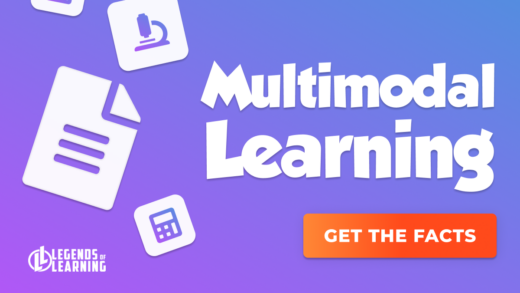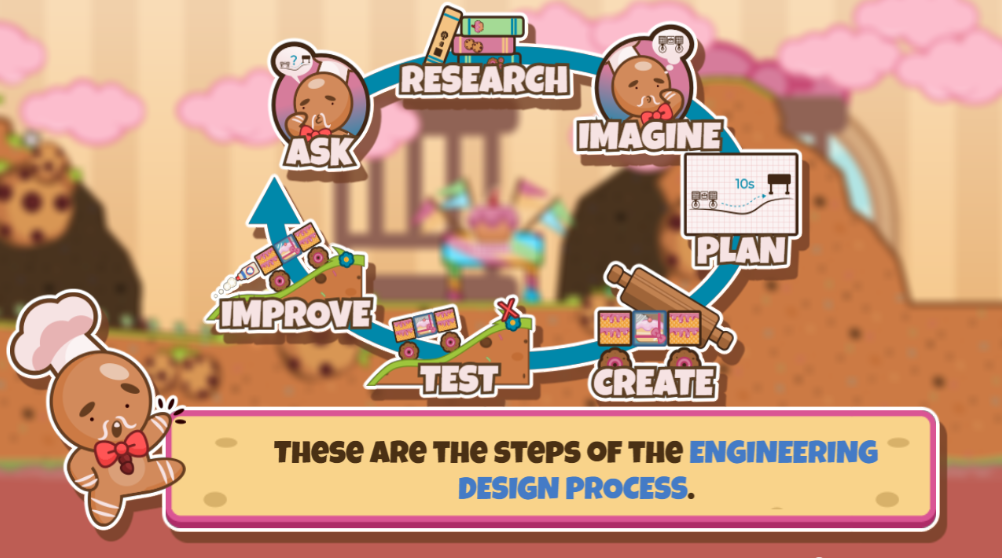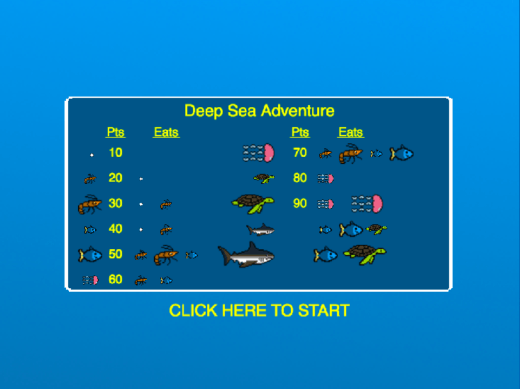5 Earth Day Science Learning Games For Your Class
Celebrate Earth Day with engaging and educational resources from Legends of Learning! Explore a variety of science games and video lessons designed to inspire your students while teaching them about biodiversity, natural resources, and human impacts on Earth systems. Perfect for both elementary and middle school classrooms, these interactive tools make learning fun and impactful.
Elementary School
Good Fishing!
ES-LS4.D-1 | Biodiversity and Humans
Embark on a fishing adventure where each cast impacts the lake ecosystem. Experience the challenge of maintaining biodiversity and ecosystem health as the environment evolves with your decisions.
RACCOON: Resources Tycoon
ES-ESS3.A-1 | Natural Resources
The Raccoons need your help to build their peaceful city by gathering natural resources. Can you help them manage the city while balancing environmental impacts?
Eco Defender – Protector of the Spheres
ES-ESS3.C-1 | Human Impacts on Earth Systems
Team up with the Eco Defender to learn how science and engineering can save the Ecosphere.
Middle School
Repairs On Wheels: Natural Resources
MS-ESS3.A-1 | Natural Resources
Drive around a village making repairs while learning about different energies and natural resources.
Eco Guardian
MS-ESS3.C-1 | Human Impacts on Earth Systems
Tackle environmental challenges through mini-games, from cleaning beaches to restoring forests.
And Don’t Forget We Also Have Video Lessons!
Biodiversity: Navigating the Playground of Life
ES-LS4.D-1 | Biodiversity and Humans
An engaging exploration of biodiversity and its connections to human life.
* Earth’s Natural Resources
MS-ESS3.A-1 | Natural Resources
An educational journey into the world of natural resources with many examples of renewable and nonrenewable varieties.
Explore these resources and more on Legends of Learning to make this Earth Day unforgettable for your students! Create a new assignment today!
Don’t miss out on our latest posts!
Legends of Learning Awakening: Version 7.6 Is Here!
We’re thrilled to introduce you to the latest version of Legends of Learning Awakening, our uniquely engaging learning experience!
In today’s educational environments, the learning process must be dynamic, engaging, and adaptable to meet each student’s needs. That’s why we’re constantly innovating and improving the Awakening Learning World.
Enhance teachers’ experience with Legends of Learning Awakening 7.6
Whether you’re a teacher looking for more customization options or a student ready to explore new learning pathways, this Legends of Learning Awakening update brings something for everyone.
Here’s a sneak peek at what’s new:
Teacher Avatar & Classroom Customization
For teachers, personalization has never been easier. With this update, you can fully customize your teacher avatar and virtual classroom environment.
This new Awakening feature allows educators to reflect their unique style and preferences, creating a more immersive experience for students. Teachers can choose from a variety of avatar parts to match their real-world appearance and design their classrooms to inspire learning.
Whether you want to preview your setup or use it as a part of the lesson, the customization options are endless in Legends of Learning Awakening!
Spanish Dialogue for NPCs (Non-playable Characters)
Inclusivity is key, and we’ve made strides toward a more bilingual learning environment. In the updated Awakening, all non-playable characters (NPCs) now have their dialogue translated into Spanish.
This addition ensures that Spanish-speaking students can engage with the platform in their native language, fostering a more equitable learning experience.
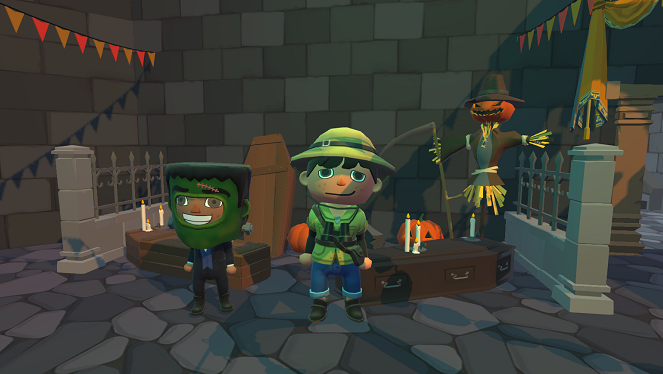
Academy 2.0: Refreshed Theme & Visuals
The Academy has received a complete makeover!
Academy 2.0 offers a refreshed theme and updated visuals, creating a more engaging and visually appealing learning environment.
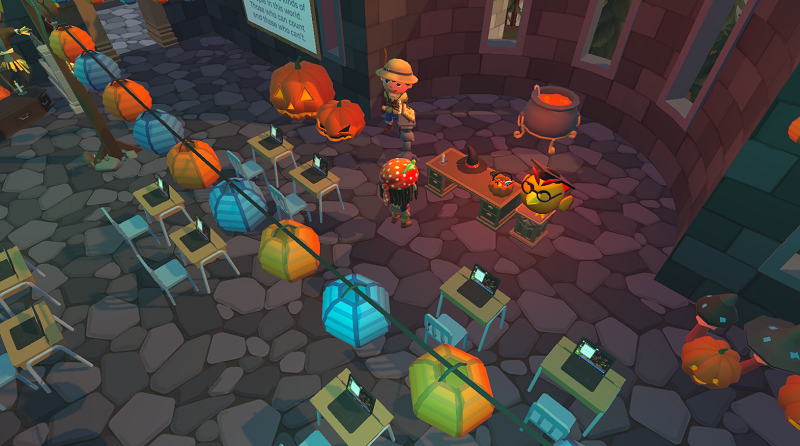
In addition, the update includes a Virtual Teacher Classroom, where educators can immerse themselves in a personalized virtual setting, blending traditional teaching with a modern, interactive experience.
The new design aims to captivate students’ attention while supporting teachers in delivering lessons effectively.
Learning Objectives & Standards Adaptability
One of the most exciting updates is our enhanced adaptability feature.
Students no longer need to be restricted by grade levels. Now, they can progress through domains instead, which allows for more flexibility in their learning journey.
If a student struggles with a specific concept, they can easily switch to another domain or revisit a prerequisite learning objective (LO) to strengthen their understanding before moving forward.
This creates a personalized learning path tailored to each student’s needs, making their educational experience smoother and more effective.
Awakening as a Time-Limited Assignment Activity
Teachers can now take advantage of timed Awakening sessions as part of their assignments.
This new feature allows you to add a timed session to any assignment, giving students a set period to complete activities within Awakening.
It’s a great way to introduce students to the Awakening learning experience while keeping them focused on specific learning goals within a structured timeframe.
Outdoor Academy Scene and NPCs (Non-playable characters)
We’re also excited to reveal the new Outdoor Academy scene, where students can explore a vibrant and immersive environment filled with wild beasts, hidden surprises, and NPCs that guide them to different locations.
This new scene encourages curiosity and exploration, making the learning experience more dynamic and engaging.
Additional Fixes and Improvements
As always, we’ve made several behind-the-scenes improvements to enhance the overall performance of the platform.
Various bug fixes and updates have been implemented to ensure a smoother and more reliable user experience. From aligning teacher assignments with learning topics to resolving display issues, we’ve worked hard to make Awakening a seamless learning tool for both teachers and students.
What are you waiting for? Try Awakening now!
This new version of Awakening is more than just an update—it’s a step toward a more adaptable, inclusive, and engaging learning experience.
Whether you’re customizing your virtual classroom, navigating through learning domains, or exploring the updated Academy, there’s something for everyone in this release.
At Legends of Learning, we’re committed to helping educators and students thrive in a digital world, and this update is another leap in that direction.
Stay tuned for more exciting developments, and dive into the new Awakening learning experience today!
Are you new to Legends of Learning and eager to try these games? Sign up now and embark on an educational adventure!
Have questions? Reach out to us at support@legendsoflearning.com
Don’t miss out on our latest posts!
Spooky Fun: New Math Games to Energize Your October
Hi Legendary Educators! We’re delighted to present our October collection of new math games. As usual, each addition has been thoughtfully developed to align with your curriculum goals and enhance student engagement.
Always combining rigorous academic content with immersive gameplay, these new games are powerful tools to transform your science instruction.
Ready to explore? Keep reading!
And If you missed last month’s new games, check out September’s update here.
New Math Games in October
Get ready to engage your students with exciting new adventures and hands-on learning experiences.
Grades 3-5
- Ninja Kite: The Precise Porcupine: Jump, dodge, and run! Follow your ninja path while learning how to multiply and divide within 100!
- Aqua Multiply: Dive into an aquatic adventure and rescue all the fishes using your whole numbers multiplication skills.
Updated Game of the Month
- Roboshipping: Fit all the robots in their respective container using your knowledge of rectangular areas.
A Closer Look at Featured Games
Ninja Kite: The Precise Porcupine — Elementary Math
Game description
Race through an exciting 1000-meter course where multiplication powers every move!
Players join Kenzo, mastering math facts while collecting coins and unlocking special abilities.
Key Features
- Progressive multiplication challenges every 200 meters
- Special powers earned through correct answers
- Engaging gameplay with educational feedback
- A perfect blend of learning and adventure
Transform multiplication practice from a routine exercise into a thrilling challenge that students eagerly tackle again and again! Check Ninja Kite: The Precise Porcupine NOW!
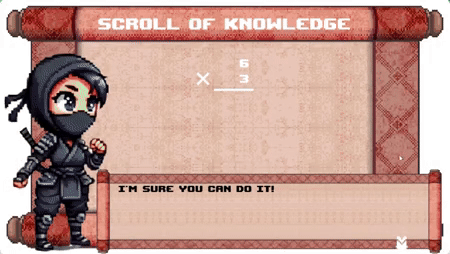
Aqua Multiply – Elementary Math
Game Description
Students embark on a thrilling adventure through diverse ecosystems, from the lush rainforests to the icy Arctic.
Along the journey, they’ll encounter a variety of endangered animals trapped in poachers’ nets. To rescue these creatures, players must solve challenging multiplication problems. Check Aqua Multiply out!
Key Features:
- Engaging Gameplay: Immerse students in a captivating storyline and stunning visuals.
- Adaptive Learning: Tailored challenges to suit individual learning paces and abilities.
- Real-World Connection: Learn about endangered species and conservation efforts.
Transform math practice into an exciting adventure that sparks curiosity and fosters a love of learning.
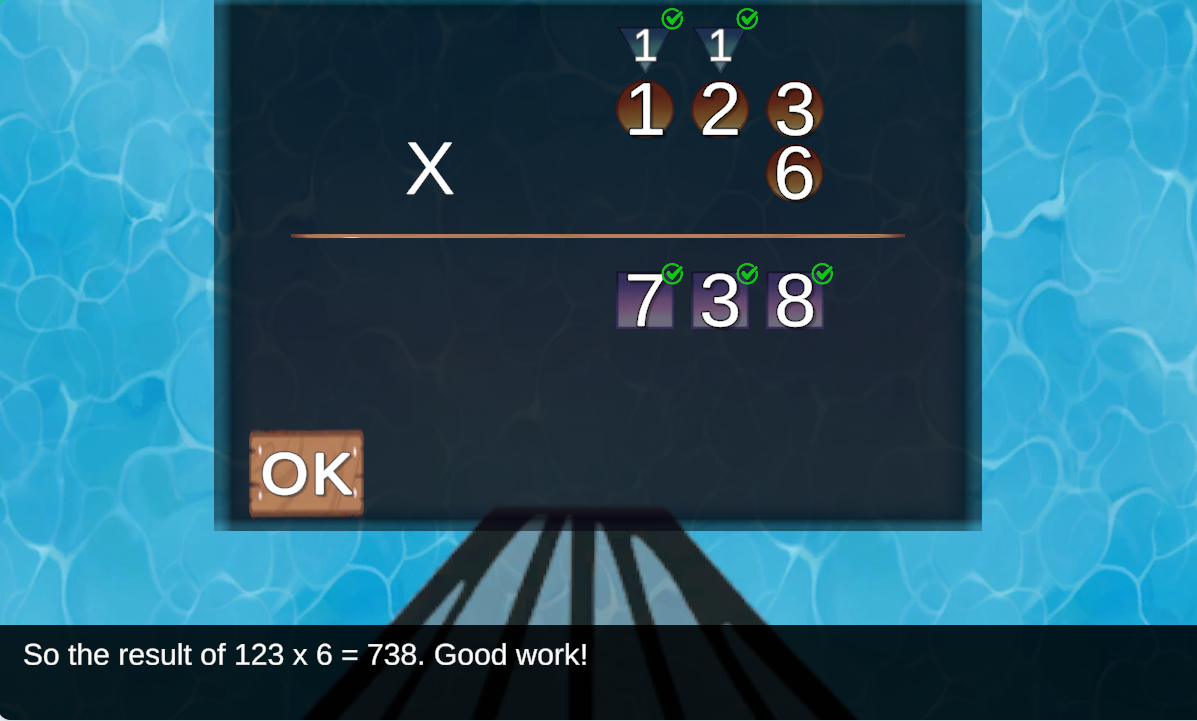
Roboshipping – Elementary Math
Game Description:
Embark on a thrilling maritime adventure where every delivery is a puzzle!
As a cargo ship captain, you must efficiently load robot-filled containers. To succeed, players will need to master the art of calculating rectangular areas and optimizing space.
Key Features:
- Engaging Gameplay: Immerse students in a real-world scenario with captivating visuals and sound effects.
- Adaptive Learning: Tailored challenges to suit individual learning paces and abilities.
- Real-World Connection: Learn about international trade, logistics, and cargo shipping.
Transform math practice into an exciting adventure that sparks curiosity and fosters a love of learning! Try Roboshipping now!
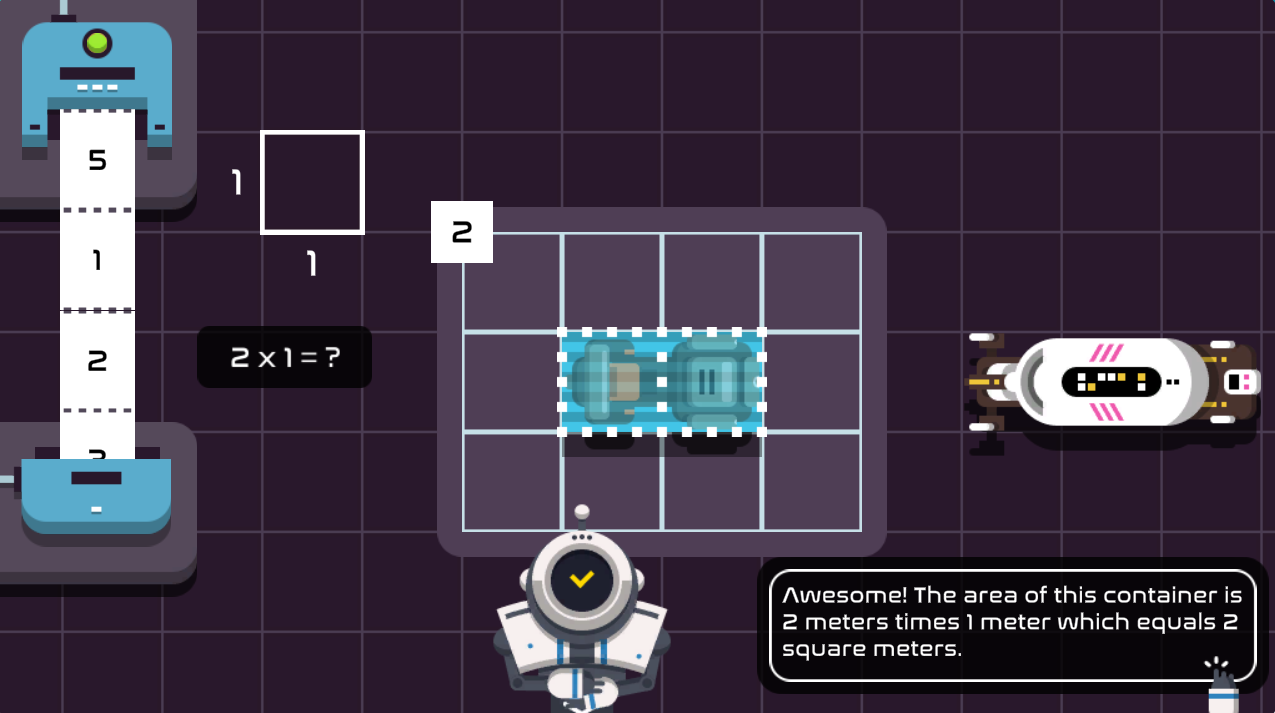
Have you missed last month’s new games? Take a look at September’s update here! And don’t forget to keep an eye out for more exciting game updates coming your way soon.
Are you new to Legends of Learning and eager to try these games? Sign up now and embark on an educational adventure!

Don’t miss out on the chance to earn reward points. Leave a teacher review! Your feedback helps other educators select the right games and ensures students have access to the best educational material.
Plus, your input guides us in creating more of the games you love. Start earning rewards today and make a difference in the learning journey!
Have questions? Reach out to us at support@legendsoflearning.com
Don’t miss out on our latest posts!
Teaching Strategies: 7 Advantages of Game-Based Learning
Estimated reading time: 14 minutes
In this article, you’ll dive deeply into the top 7 advantages of game-based learning within the classroom, understand what differentiates it from gamification, and discover which types of games are better for today’s kids.
Table of contents
- Gamification vs Game-Based Learning: What’s the Difference?
- 7 Advantages of Game-based Learning Strategies
- 1. Game-Based Learning Increases Engagement and Enjoyment
- 2. GBL Enables a Safe Environment for Failure
- 3. Game-based Learning Enables Immediate Feedback
- 4. GBL Improves Problem-Solving Skills
- 5. Game-Based Learning Enhances Memory and Retention
- 6. GBL Promotes Active Participation
- 7. It’s an Amazing Tool To Raise Test Scores
- Games vs. traditional learning tools, according to Dr. Gee
- Types of game-based learning
- A game-based learning platform for Schools & Districts!
Legends of Learning Awakening: Introducing the Latest Features
Awakening by Legends of Learning isn’t just a game; it’s a revolution in educational experiences. This immersive, multiplayer world offers a treasure trove of curriculum-aligned math and science content, all wrapped in a captivating and fun package.
The new version takes things a step further, introducing exciting features designed to supercharge student engagement and academic achievement. But before we delve into the new additions, let’s explore the core of Awakening’s success: the power of game-based learning.
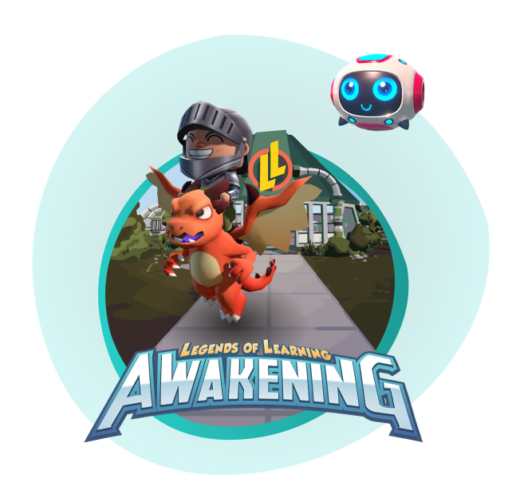
The Power of Game-based Learning: Engaging Experience
Traditional education often relies on rote memorization and passive learning, which can leave students feeling disengaged and uninspired. By incorporating game-based learning principles, Awakening transforms learning into an active, dynamic experience.
This approach taps into the power of emotions in learning. When students experience enjoyment, a sense of accomplishment, and a healthy dose of friendly competition, they become more motivated to explore and learn.
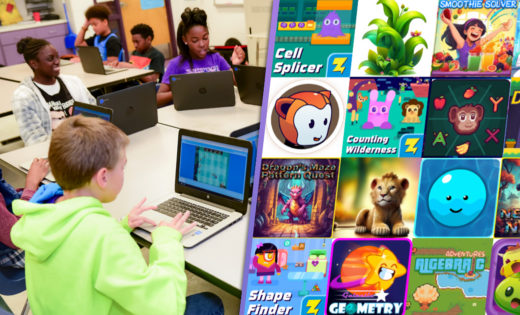
Legends of Learning Awakening: A Glimpse into the Future of Education
The latest version of Awakening builds upon its core strengths, offering innovative features that enhance the learning experience:
Streamlined Assignments: “Teacher Quests” and “District Quests” are now seamlessly integrated into the game world. Students can easily access, complete, and revisit assignments within Awakening, eliminating the need to switch between platforms.
Enhanced World Exploration: Beastie riding and customizable trails add a layer of fun and personalization to navigating Awakening. These features provide additional motivation for students to collect Beasties and explore all corners of the game.
Expanded Learning Content: Exciting new minigames broaden the learning horizons within Awakening. Students encounter fresh, engaging learning experiences that complement the existing curriculum-aligned content.
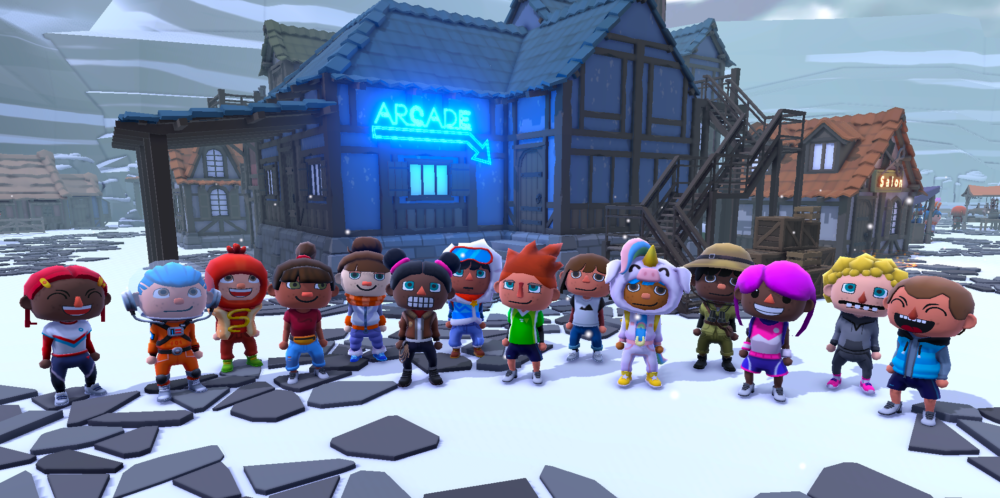
Accessibility for All: Text-to-speech functionality on message popups ensures that all students, regardless of their reading level, can fully participate in the game. This feature fosters inclusivity and ensures no student is left behind.
Personalized Support: Just-in-Time Learning promises to be a game-changer. Students struggling with specific concepts will receive personalized recommendations from their in-game guide, Tuto, directing them to relevant learning materials. This targeted support will help students catch up and solidify their understanding.
So why wait? Head over to Awakening today and unleash the power of game-based learning in your classroom!
Beyond the Game: The Benefits of Awakening for Teachers and Students
The impact of Awakening extends far beyond the virtual world. Teachers and students alike benefit from its innovative approach:
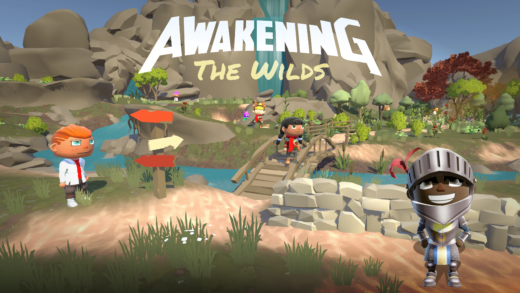
Teachers benefit for…
Detailed Reporting: Legends of Learning data-rich reports provide educators with invaluable insights into student performance on specific topics. This allows teachers to tailor their instruction and identify areas where students might need extra help.
Curriculum Alignment: Awakening offers a vast library of curriculum-aligned games, ensuring that students are practicing and mastering relevant math and science concepts.
Multimodal Learning Support: Awakening empowers teachers to create engaging multimodal learning experiences, blending classroom instruction with multimedia educational assets, and curriculum-aligned game-based learning tools.
Students are happy due to…
Unlimited Options: Students have access to over 2,000 curriculum-aligned math and science games, fostering a love for learning both at school and at home.
Personalized Learning: Students can customize their avatars, adding a playful element to their experience.
Learn at Their Own Pace: Awakening allows students to progress individually, ensuring they fully understand each topic before moving forward. This personalized approach fosters confidence and a deep understanding of the material.
Embrace Productive Struggle: Awakening provides a safe and rewarding environment where students can tackle challenges. Through engaging gameplay, they’ll develop valuable problem-solving skills and celebrate their achievements.
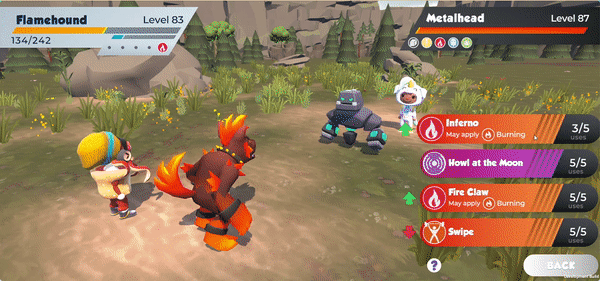
Boost Cognitive Function: Studies show that Awakening enhances cognitive function and learning comprehension. Interactive games stimulate the brain, fostering a love for learning that extends beyond the summer months.
Explore Unforgettable Experiences: Awakening goes beyond textbooks! Students embark on virtual adventures, conduct simulations, and explore fascinating topics, all while strengthening their math and science knowledge.
Motivation and Competition: Leaderboards and quiz games inject a healthy dose of competition, keeping students engaged and motivated to excel.
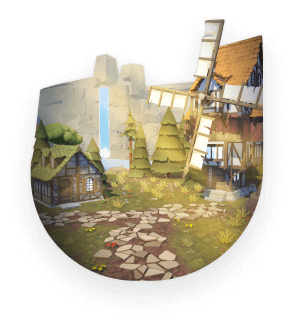
Awakening: Transforming Education in the Digital Age
Legends of Learning’s commitment to innovation and its focus on student engagement have earned it well-deserved recognition, including the 2023 Parent Teacher Choice Award.
Furthermore, research-backed effectiveness and unique features make Legends of Learning Awakening one of the top educational tools of choice in digitally enabled classrooms.
Students Playing Legends of Learning Awakening Show Higher Test Scores!
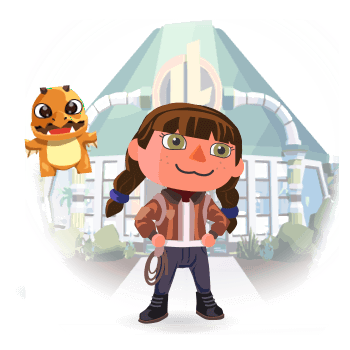
Key Takeaways
- Awakening offers a revolutionary approach to education through game-based learning. It utilizes games, points, badges, and leaderboards to make learning fun and engaging.
- The latest version introduces several exciting features: streamlined assignments, enhanced world exploration with Beastie riding and trails, expanded learning content with third-party minigames, improved accessibility with text-to-speech, and personalized support with Just-in-Time Learning. Assistant guide Tuto now offers help and suggestions for learning games and videos if a student needs them.
- A tool that benefits both teachers and students. Teachers gain access to detailed reports and curriculum-aligned content, while students enjoy unlimited access to learning games, personalized avatars, and a motivating competitive environment.
- Legends of Learning is a recognized leader in educational gaming. It boasts research-backed effectiveness and awards like the 2023 Parent Teacher Choice Award.
- The latest version features 10 exclusive minigames. These 10 custom games offer fresh approaches to learning, engaging students in exciting ways.
Awakening is a powerful tool for transforming classrooms and making learning enjoyable for students of all ages. Feel free to explore Legends of Learning’s website to discover all about the exciting ways it can transform students’ learning journey!
Read our latest articles & news!
Legends of Learning Selected by U.S. Dept. of Education for $8 Million Grant to Study Game-Based Learning
Fulton, MD, April 3, 2024 – Legends of Learning has been selected to partner with Impact Florida, a non-profit, non-partisan organization advancing excellence in classroom instruction, and WestEd, a national non-partisan leader in research, development, and service focused on education and human development, to examine the efficacy of game-based science instruction in Miami-Dade County Public Schools (MDCPS).
An $8 million grant from the U.S. Department of Education’s Education Innovation and Research (EIR) grant program will fund a five-year study to explore how a standards-aligned, game-based learning (GBL) experience will impact student performance on the fifth-grade state standardized science test. The study will include a year-long randomized controlled trial (RCT). Several prior studies of the Legends of Learning platform have already shown significant positive correlations between game platform usage and improvements in test scores. With WestEd leading data collection, analysis, and insights, this study will build upon an established body of evidence.
“We’re excited to be partnering with Impact Florida to test the impact of Learning Universe, our evidence-based, rigorous, game-based learning curriculum, with educators in the state,” said Legends of Learning CEO Dr. Vadim Polikov. “Students are struggling to stay engaged in school, especially post-COVID, and this has led directly to lower test scores in math and science. Games have the power to change that.”
Innovation in delivering education is of paramount importance given current proficiency trends in science education. The COVID-19 pandemic disrupted teachers’ ability to engage students in attentive learning experiences. During this period, proficiency scores were negatively impacted, as Florida fifth-grade science performance fell from 55% proficiency in 2018 to 47% in 2021.
In response to pandemic-induced instruction challenges, teachers scrambled for instructional tools to engage a student population that shifted to more screen-based engagement for learning, social connection, and entertainment. Interactive content has become the norm: 6 out of the top 10 content sites used by teachers and students in the 2021- 22 school year were gamified or used games to teach.
“Impact Florida is thrilled to help support research on the potential impact of innovative tools like Legends of Learning and to work with Florida educators in doing so,” said Impact Florida President Mandy Clark. “Increasing engagement is important to student academic growth, and we’re eager to see how game-based learning can tap into students’ existing interests.”
A prior study of the Legends of Learning platform by WestEd showed up to a 23-percentile point improvement in science achievement scores with usage of the GBL platform. “This RCT will reveal the direct impact of the Legends of Learning platform on science achievement, building upon our prior findings of a positive association on science achievement with increased usage of the platform,” said Taunya Nesin, Director of STEM Networking and Partnerships at WestEd. “The methodology and scope of this study will help us learn more about best practices for implementation and use of GBL in elementary classrooms and the impact it can have on learning.”
The study will be conducted in partnership with Miami-Dade County Public Schools, one of over 300 districts across 49 states that have partnered with Legends of Learning. Reacting to the award, Dr. Jose Dotres, MDCPS Superintendent, said, “We pride ourselves on building networks that collaborate to maximize the potential of every student in our district. That collaboration extends to studies like this, which can provide us with insights that help accelerate student performance. We’re excited to participate in this research.”
Approximately 280 science teachers and over 6,000 students are projected to participate in the study. The U.S. Department of Education’s Education Innovation and Research program will provide a grant of $7,997,993 to support the research, which will be matched by an in-kind contribution of more than $800,000 from Legends of Learning.
###
To request an interview with Legends of Learning CEO Vadim Polikov, contact Jose Ramos at (925) 261-8586 or jose.ramos@legendsoflearning.com
To request an interview with Impact Florida President Mandy Clark, contact Trey Csar at (415) 215-4994 or trey@impactfl.org.
To request an interview with WestEd staff on this project, contact Gretchen Wright at gretchen.wright@wested.org.
New Monthly Twitter Chat: #LegendaryChat
If you are on Twitter and you like game based learning (GBL), you’re in for a treat. Starting on Monday, April 2nd at 8pm ET, we’re launching our monthly Twitter chat, #LegendaryChat!
Taking over the Twitter account that night will be Legendary ambassador Amanda Glover (she’s also on Twitter and has her own EdTech blog). Get in on the conversation simply by using the hashtag #LegendaryChat.
For the inaugural #LegendaryChat, our topic will be Intro to Game-Based Learning. This chat is ideal for educators from all over the GBL spectrum, from classroom gaming experts to interested teachers who have never used game-based learning at all.
Participants will learn:
- The benefits of bringing GBL to the classroom
- Challenges faced by teachers who use GBL, and how to overcome them
- Strategies for making GBL as effective as possible for students
In the meantime, there are tons of other education-related Twitter chats you can check out! Here are some of our favorites:
Ongoing chats:
- #scichat: Exactly what it sounds like. Chat with other educators about all things science!
- #elemchat: Anything and everything related to elementary education! This one is new for us, since we’ve just released our first few games for grades 3-5.
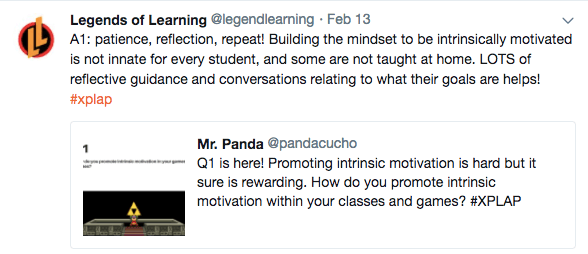
Weekly chats:
- #XPLAP: Stands for Explore Like a Pirate. Yep, that’s a thing. Tuesdays at 10pm ET.
- #games4ed: A Twitter chat all about gaming in education! Thursdays at 8pm ET (though we like to check out this hashtag all week long).
Do you have another Twitter chat that you love? Let us know in the comments section.
Save the date and spread the word about #LegendaryChat on Monday, April 2nd. We can’t wait to see you online! And don’t forget to follow us at @legendlearning.
Finding the Riches in Game-Based Learning
By Caitlin Unterman, 8th Grade Science Teacher, Forest Middle School (VA)
Most in the education world believe that enrichment is the most important goal of a classroom. Teachers focus on creating opportunities that simultaneously enrich and engage students. However, many fail to recognize what is actually enrichment, and what is simply reinforcement.
Enrichment, by definition, is “the act of making someone wealthier.” I like to think this is wealth in the form of knowledge. Do a simple Google search and you find another definition of enrichment: “improving or enhancing the quality or value of something”.
Both definitions apply to our classrooms. And there is no better way to enhance the value of “something” than by adding what kids love best: games.
Another simple Google search can find you the EdTech definition of game-based learning: “Generally, game-based learning is designed to balance subject matter with gameplay and the ability of the player to retain and apply said subject matter to the real world.”
Put enrichment and game-based learning together by definition, and you would get “Generally, game-based learning is designed to balance subject matter with gameplay and the ability of the player to retain and apply said subject matter to the real world while improving or enhancing the quality or value of education.” As an 8th-grade Earth Science teacher, that sounds pretty sweet.
Importance of Enrichment in All Content Areas
Like the majority of teachers, my enrichment efforts are based on data. Strands of weakness and complex learning concepts take priority as I work to innovate and plan creative units to convey the concepts better. Try teaching radiometric dating and half-life curves to a bunch of 8th graders who were put into a High School Credit science class… That is quite a challenge.
Game-based learning has become the Aleve to my headache in that regard. Students are far more interested in their phones than any piece of paper I hand out. So, I moved towards digital learning.
Using the game-based learning platform Legends of Learning, I created a pre-test playlist on geologic time, added an assessment pack at the end, and downloaded my students’ performance data. After highlighting the weaker strands (subcategories within the topic), I made a new playlist. I taught the concepts per usual, emphasizing the weaknesses shown in the pre-test playlist data, and then launched the playlist again after my normal teaching lessons.

Much to my surprise, weak strands were no longer categorized as “weak”, but more so, “improving”. Take a look at the Vanderbilt study conducted in partnership with Legends of Learning, and it speaks for itself. Weak strands can become enhanced strands through game-based learning enrichment.
How to Implement Games to Target Weak Strands
Some may think, “All of this is great, but where do I start?” Game-based enrichment isn’t something you just wake up and decide to implement one day.
Instead, consider doing some critical data analysis, at least once, before jumping right in.
The data analysis portion of the Legends of Learning platform allows you to break down each learning objective by student performance.
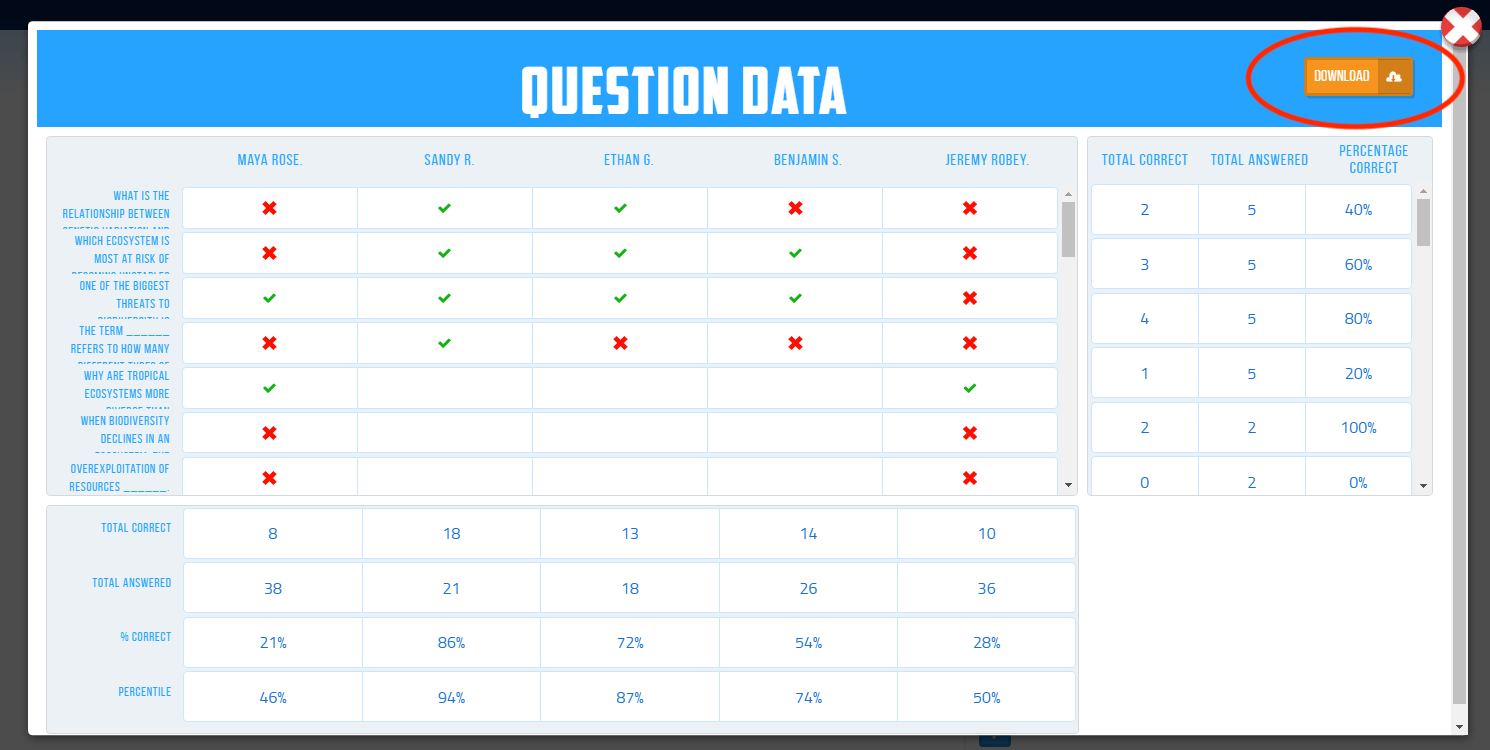
From this, identify the weak strands. Your definition of “weak” may differ from mine, but usually, I emphasize those showing 50% mastery or below. Think about those weak strands in terms of what I call the 3 Vs: Volume, Value, and Vocabulary. Let’s break those down:
Volume
On average, how much time do you spend emphasizing a strand? One day? One week? Strands that are only the focus of one day of class may not be as crucial as larger units you spend weeks on. Take out the strands that are “one-dayers”.
Value
Are the skills presented in this weak strand going to affect later learning objectives? Place an educational value on the learning objective. Is the concept crucial or supplementary?
Vocabulary
Is the learning objective heavy on vocabulary? If so, take a look at the overview and curriculum for each game. Find the key vocabulary needed, pack the playlist, schedule the playlist to run over the weekend as “homework,” and collect data on Monday. You should see improvement.

The key to game-based enrichment is finding the value in the innovative learning that is taking place. Don’t just plug in games that are fun and engaging. The games need to emphasize weaknesses within the content for enrichment to be successful.
What are your experiences with using GBL for enrichment?
Game-Based Learning vs. Gamification: What’s the Difference?
A handful of game-related terms get thrown around the EdTech sphere. Two big ones are gamification and game-based learning (GBL).
But what exactly is the difference between these two? Many confuse the terms, but one is not the other.
Last Spring, just before my first day at Legends of Learning, a friend asked me what exactly we do. Ill-versed in EdTech buzzwords, I did my best to explain, and he said, “Oh, so you do gamification. We talk about it all the time in education consulting.”
To my uninitiated mind, “gamification” was a concise explanation, and I wondered why the term had never come up in previous conversations with the Legends team. It turns out, gamification isn’t what we do.
Gamification in Education: What it Looks Like
Let’s turn to our friends at Classcraft to show an example of gamified learning. I met them at ISTE 2017 in San Antonio, and they’re great — they even wrote a blog about us!
Classcraft defines the principle of gamification as “applying game principles to non-game situations.”
Basically, Classcraft is an experience, and it works like this:
Teachers deploy learning materials they’ve created—think worksheets, quizzes, and videos—as different destination points within a “Quest.”
On their side, students work through these materials to advance through the Quests at their own pace. As they complete their work, they travel across a map, from one end of an island to another.
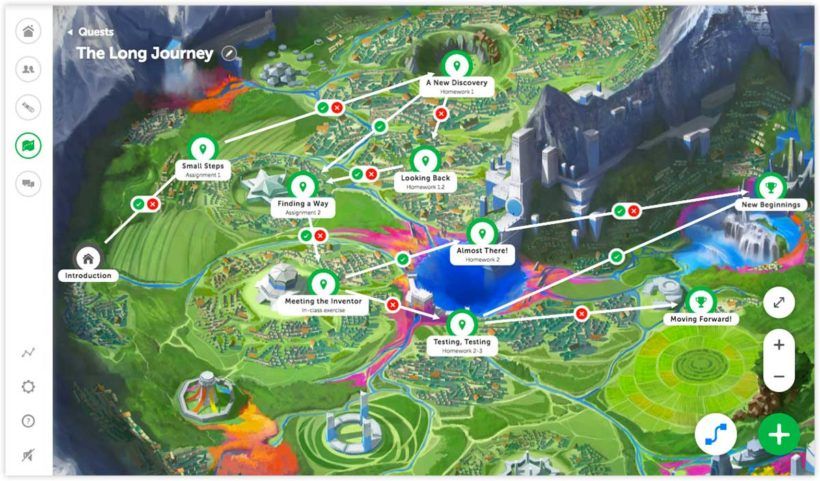
This is a fun way to visualize progress, and it uses the principles of an adventure game to capture students’ interest while they learn. That’s gamification.
The learning itself is done through traditional classroom assignments, not a game. That would be a different story.
Understanding Game-Based Learning (GBL)
Unlike the traditional classroom assignments that persist in a gamified classroom, game-based learning is exactly what it sounds like. It’s a method to teach and use games to introduce, enforce, or enrich learning concepts.
The idea behind this method is that learning through gameplay can be more engaging than traditional methods like lectures, textbooks, and worksheets. When students engage, they’re more likely to process new information. This makes for better subject matter retention, leading to higher test scores, as demonstrated by research.
Games are often more engaging than traditional learning tools because, of course, they’re fun. But beyond this highly unscientific assertion, how does GBL achieve higher engagement from an educational theory standpoint? Game-based learning expert, Dr. James Paul Gee, attributes it partially to the principle of “Performance Before Competence.”
In his essay “Good Video Games and Good Learning,” Dr. Gee explains that students playing a game “can perform before they are competent, supported by the design of the game, the ‘smart tools’ the game offers.”
This differs from more traditional learning methods, which often require students to read a text and become competent before they can start trying to perform tasks related to the new knowledge. For many students, these methods are far less effective than the “learn by doing” approach that GBL allows.
In short, engagement is the ticket to effective learning.
Keeping that in mind, let’s look at how gamification and GBL are similar, and why so many people tend to think they’re interchangeable.
A Key Similarity
Game-based ñearning and gamification are guided by the same overarching principle: morphing a traditional classroom task into a more engaging, competitive activity.
Take for example the Interactions in Ecosystems learning objective on our site. It is home to ten mini-games, ranging in length from 5-25 minutes. Each game interweaves specific science concepts — in this case, how ecosystems work, as delineated by the NGSS — into the gameplay.
In “Deep Sea Adventure,” you start as a tiny shrimp, eating plankton and avoiding predators, ultimately growing into a fish, a jellyfish, a turtle, and a shark. In “EcoKingdoms: Interactions,” your role is park manager, making decisions to balance the flora, fauna, and finances that are crucial to the park’s operation.
Other GBL experiences feature competition amongst students. They compete with one another and motivate each other to perform at a higher level in the game. Some learning games even have leaderboards so students can compete against players all over the world.
Have you ever tried to get small children to help clean up their toys after making a mess? One effective strategy is to say “I bet I can clean up more toys than you… ready, go!” Nine times out of ten, the child will go whizzing around their bedroom trying to beat you in the new “clean-up game” you just created. That is gamification at work.
Competition is a motivator, and can make any task — whether cleaning the playroom or learning science — a lot more fun. So if GBL and gamification share this core similarity, why is the distinction so important?
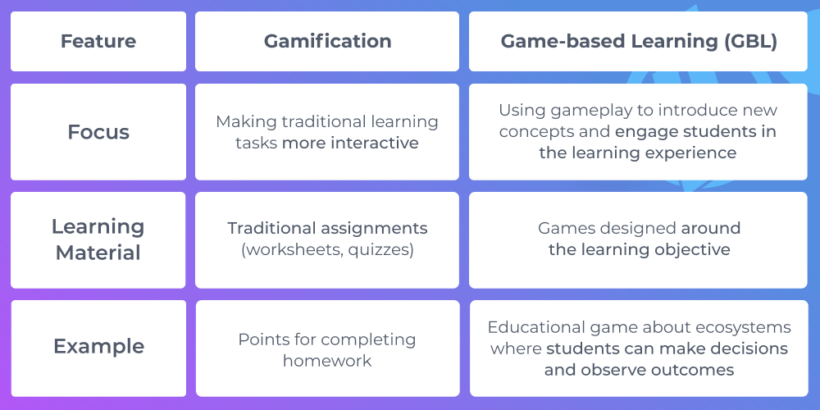
Gamification alters significant structural aspects of the learning experience, breaking from the norms of lectures and worksheets. Teachers gamify their classrooms for a fresh new approach to a complex concept.
Game-based learning resources can be flexibly plugged into a traditional classroom, and interchanged for other tasks like worksheets, without altering how the classroom runs overall.
Next time you talk tech in the teacher’s lounge, see if your colleagues know the difference. Let them know you’re not playing around!
Try out Awakening, our uniquely engaging, award-winning, solution for game-based learning.
Are you new to Legends of Learning and eager to try these games? Sign up now and embark on an educational adventure!
Have questions? Reach out to us at support@legendsoflearning.com
Don’t miss out on our latest posts!
Here Come The AI Teaching Bots
A recent EdTech Magazine article advocates for the rise of AI in the classroom. Often dubbed “bots” in social media circles, these subtle software programs use algorithms to help teachers measure student performance.
The article marks the inevitable use of AI and bots in the classroom. The education AI movement extends beyond the edtech sector and includes some of the industry’s biggest content providers, like McGraw-Hill.
Uses for AI extend across diverse subjects and tasks. Whether it’s assessments or grading, or recommending next levels of content, AI can help a teacher make smart decisions about how to guide a student and/or a classroom.
Of course, the EdTech Magazine article closes with an almost mandatory, semi-comforting phrase: “We will always need teachers and human interaction in the classroom. Anything else does not compute.”
But if that’s the case, how does AI work with a teacher in the classroom?
Rise of the AI Teacher Advisor
IBM launched its Teacher Advisor with Watson AI program to help educators. The program was developed in partnership with the American Federation of Teachers.
With tests in more than 1000 classrooms, the program aims to save elementary school teachers time through formative assessment, lesson planning, and other actions. In essence, Teacher Advisor is the digital equivalent of a teaching assistant.
We like AI teaching tools like this because we know how overburdened teachers are, particularly public school teachers. Whether they have 30 students in elementary school or 120 in high school, personalizing lessons for individual students or small cohorts is challenging.
That is particularly true not just with class and non-class hours, but also during personal time. Teachers are spending as much as five to seven hours per week just looking for new and interesting content. Then they have to assess, integrate, and launch this content. Not to mention their actual grading and teaching work.
If we consider any relief or assistance to be useful, AI can make a teacher’s life much more reasonable.
But can it replace a teacher? Isn’t that the great fear?
The Diamond Age AI Lesson
Neal Stephenson’s cyberpunk classic The Diamond Age picks up this very subject. In the book, three young girls are all given the same nanotech primer to help them learn and understand subjects as well as life skills.
How does the AI primer work out for these girls? As you might expect, it works very differently for each individual student.
In fact, it doesn’t matter that the AI alters itself to meet the students’ needs. The students are unique and make different decisions based on their perspective.
While educational, the primer cannot coach the girls well or help them change their life perspective. In some ways, The Diamond Age illustrates the failure of technology to influence our humanity.
In the end, teaching is more than imparting knowledge to students. A teacher delivers a very real human perspective, either intentionally or through abstract experience. When given the time to focus, teachers perceive a student’s needs, needs that may not be expressed through performance data.
AI may never replicate this human interaction, which may explain why we will always need a teacher’s perspective.
What do you think?



